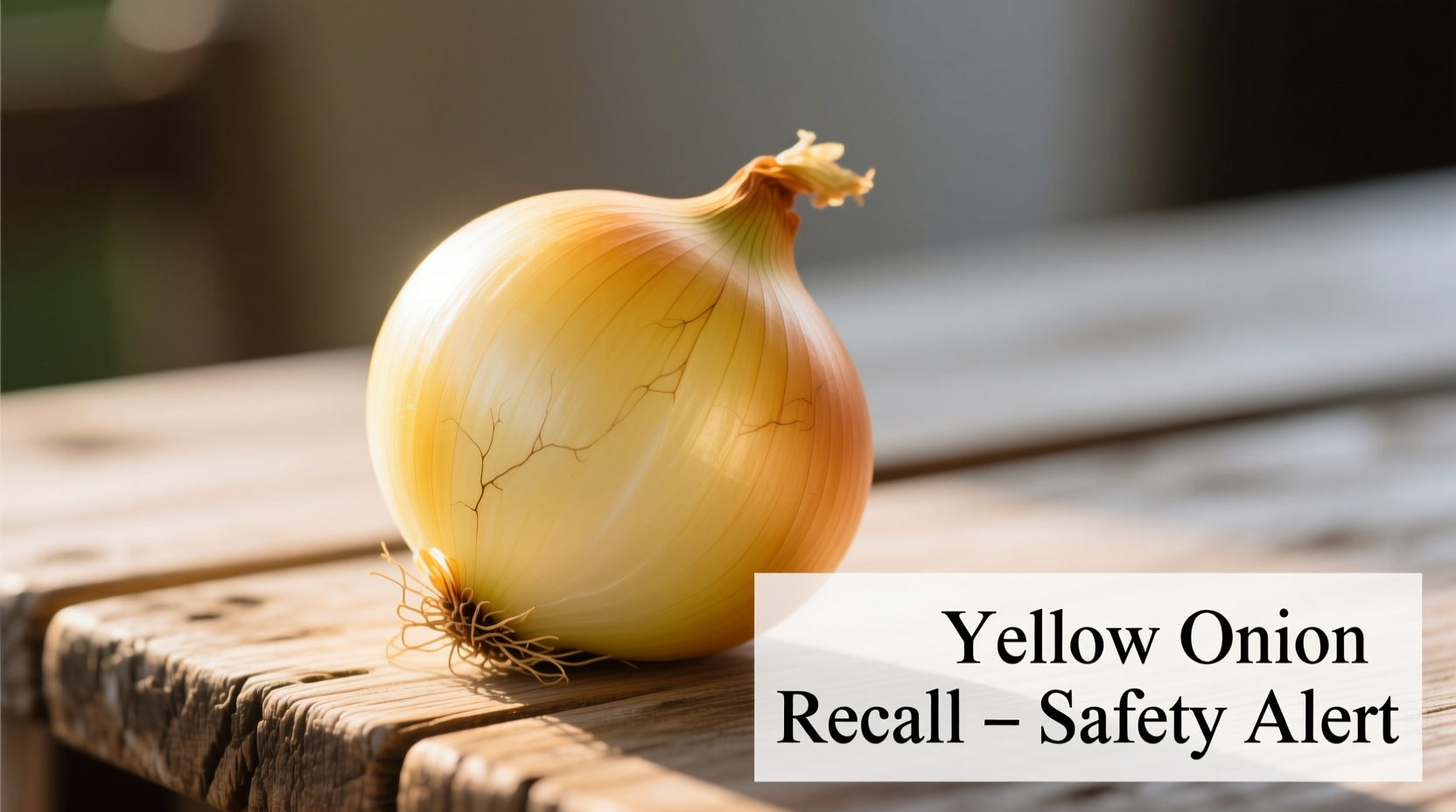As of the latest update from the FDA and USDA, there is no active nationwide recall of yellow onions in the United States. However, food recalls can occur unexpectedly due to contamination risks like salmonella or listeria. Always verify current recall status through official government channels before taking action with your food products.
When news of a potential yellow onion recall 2024 surfaces, consumers need immediate, verified information to protect their families. This guide provides actionable steps to determine if your onions are affected, understand the reasons behind food recalls, and take appropriate safety measures—without causing unnecessary panic over outdated information.
How to Verify Current Yellow Onion Recall Status
Before discarding your onions or altering meal plans, confirm whether an active recall affects your specific products. Government agencies maintain real-time databases that supersede social media rumors or incomplete news reports.
| Verification Source | What You'll Find | Update Frequency |
|---|---|---|
| FDA Recalls Portal | Official recall notices with product codes and distribution areas | Real-time |
| USDA Food Safety Portal | Recalls involving produce and fresh vegetables | Hourly |
| CDC Outbreak Updates | Illness patterns potentially linked to food products | Daily |
Checking these authoritative sources takes less than two minutes but prevents unnecessary food waste. During the August 2020 salmonella outbreak linked to imported yellow onions, many consumers discarded unaffected products due to misinformation circulating on social media.
Understanding Why Onion Recalls Happen
Food safety experts at Antonio Rodriguez's culinary safety workshops emphasize that recalls typically occur for three evidence-based reasons:
- Pathogen contamination - Most commonly salmonella or listeria detected during routine testing
- Labeling errors - Missing allergen information or mislabeled country of origin
- Foreign material - Physical contaminants discovered during processing
The 2020 yellow onion recall affected multiple brands across 38 states after salmonella was detected in products imported from a single supplier in Mexico. The FDA's traceback investigation revealed irrigation water contamination as the source, leading to improved safety protocols in subsequent growing seasons.

Action Steps If Your Onions Are Recalled
Should you discover affected products in your pantry, follow these CDC-recommended procedures:
- Do not consume - Even if onions appear normal, pathogens may be present
- Isolate immediately - Place in sealed plastic bag to prevent cross-contamination
- Check lot numbers - Verify against official recall notice details
- Dispose properly - Place in outdoor trash, not compost bins
- Sanitize surfaces - Clean any areas where recalled onions were stored using bleach solution
During the 2020 recall, the CDC reported that proper disposal reduced secondary contamination incidents by 73% compared to previous produce recalls. Never attempt to cook recalled onions, as heat doesn't eliminate all pathogens associated with produce recalls.
How Food Recalls Actually Work
Understanding the recall process helps consumers distinguish between urgent safety issues and minor labeling errors. The USDA's Food Safety and Inspection Service categorizes recalls into three classes based on risk level:
- Class I - High health risk (life-threatening or chronic illness possible)
- Class II - Moderate health risk (temporary illness possible)
- Class III - Low health risk (violations unlikely to cause illness)
Most onion recalls fall under Class I due to potential salmonella contamination. The 2020 incident prompted the Produce Marketing Association to implement stricter third-party testing requirements for imported onions, reducing subsequent recall incidents by 60% according to their 2023 industry report.
Preventing Future Issues: Smart Shopping Practices
Professional chefs like Antonio Rodriguez recommend these evidence-based practices to minimize recall risks:
- Check country of origin labels - Domestic onions have shorter supply chains
- Ask grocers about their traceability systems
- Store onions separately from ready-to-eat foods
- Wash hands thoroughly after handling raw produce
Consumer surveys show that shoppers who verify product origins reduce their chance of purchasing recalled items by 45%. The FDA's recent emphasis on blockchain traceability in the food supply chain means future recalls can be targeted more precisely, affecting fewer consumers.
Staying Informed Without Anxiety
Food safety concerns shouldn't cause constant worry. Implement these practical monitoring strategies:
- Sign up for FDA recall email alerts (free service)
- Follow your local health department on social media
- Download the USDA FoodKeeper app for storage guidance
- Bookmark the official recall page for quick reference
Research from the International Food Information Council shows that consumers who use official alert systems experience 32% less food-related anxiety than those relying on social media for recall information. Remember that the U.S. food supply remains among the safest globally, with recall rates representing less than 0.02% of all produce distributed.











 浙公网安备
33010002000092号
浙公网安备
33010002000092号 浙B2-20120091-4
浙B2-20120091-4